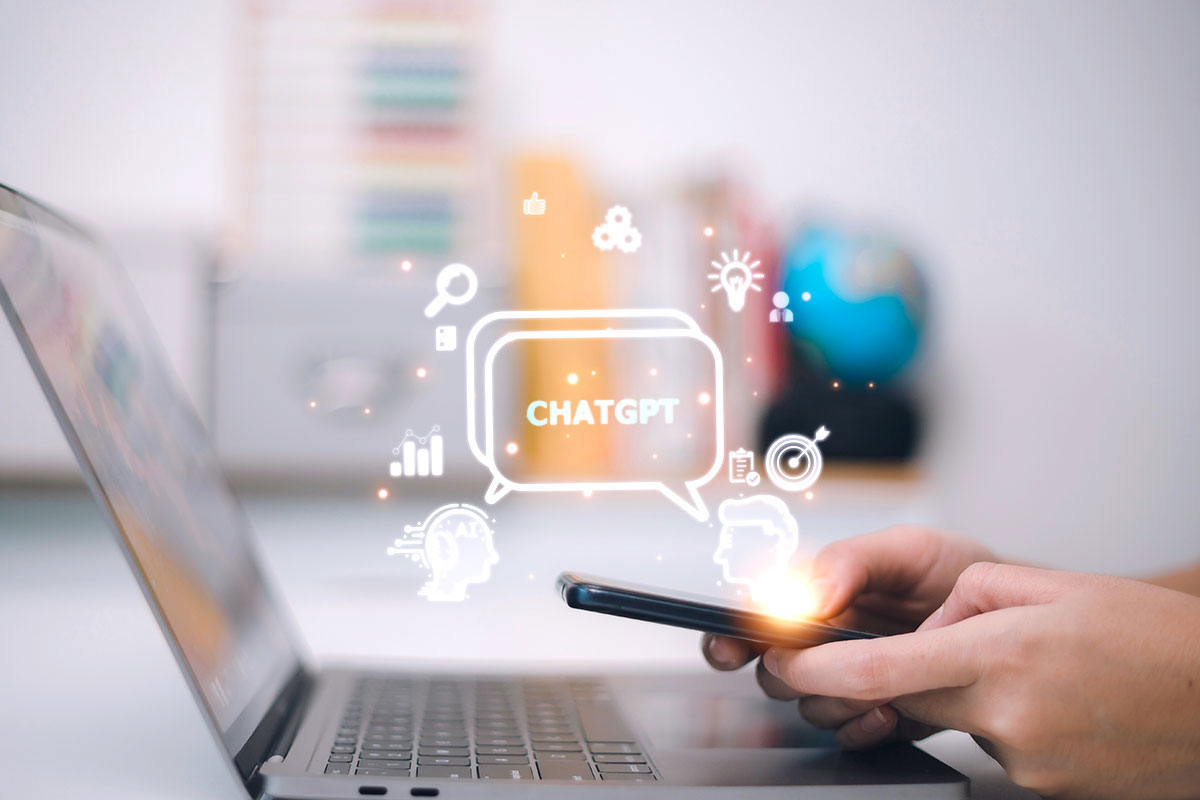You can hardly avoid news of ChatGPT nowadays with everyone from teachers to recording artists weighing in on the risks and benefits of the technology. But for those who haven’t paid attention, ChatGPT is the newest form of AI which launched in November 2022. It’s an AI-powered chatbot that simulates human-like conversation using the deep learning gained after crawling hundreds of thousands of internet pages. Five days after launching ChatGPT, the platform had already gained one million users worldwide. In April 2023, ChatGPT has over 100 million users and the website generates 1 billion visitors per month. So clearly, there’s a lot of interest in this new tech. Personally, I’d rather have a flying car but maybe that’s just me.
In any case, I was interested in learning more about the potential benefits and inherent risks of using ChatGPT so I did some research of my own. Here’s what I found.
- In a recent survey of marketing executives conducted by npdigital.com, nearly 78% of marketers say they will invest in AI for their clients or businesses in 2023. For many, this will be their first foray into the world of AI although 37% of all businesses currently use AI (dataprot.net).
- Many businesses are interested in using ChatGPT to make time-consuming or repetitive tasks more efficient. For example, ChatGPT can analyze large sets of data very quickly, allowing businesses to make quality, data-informed decisions more rapidly. Marketers are experimenting with using the technology for content generation to write headlines, ad copy, scripts, captions, and email marketing messages.
- As we know, AI chatbots are human-like, not human. But the similarities between the two can be frightening. See this recent New York Times article where a columnist relates his experience with AI. Yikes.
- When ChatGPT launched in 2022, the majority of its knowledge included information and events prior to 2021. It only had limited knowledge of data and events occurring after 2021. In March, GPT4 became able to connect to the internet. This enhanced machine learning is available as a trial to subscribers on the paid ChatGPT Plus platform.
- Although it speaks with authority, ChatGPT can produce incorrect answers to queries. It also lacks the creativity gained by lived human experiences. And most recently, researchers have successfully trained ChatGPT to produce increasingly toxic responses to queries. This begs the obvious question, is this technology worth it?
- There is concern that ChatGPT can perpetuate biases and reinforce stereotypes because of the information it was trained on.
- There are potential legal ramifications of using ChatGPT to create images, music, poetry, etc. related to infringement of copyright and trademark.
All in all, even amidst the banning of ChatGPT in countries like Italy, AI, including ChatGPT, is here to stay. We’ve been heading this direction for years so it’s time to figure out how to leverage technology to do your job more efficiently, while avoiding some of the well-documented pitfalls of AI. Use it as a part of a holistic marketing, business or growth strategy. Just remember: great content brings something new, different and experience-driven to your audience. ChatGPT alone will allow you to churn out a lot of content quickly, but it won’t serve to differentiate your brand.
The caveat to all of this can be summed up in two words … “for now.” ChatGPT, as well as other AI, will continue to evolve, almost daily at this point. It will seemingly become smarter as people learn how to write better queries and the dataset will continue to grow. So, while I’m not concerned with ChatGPT causing layoffs or replacing humans, it’s difficult to predict future implications of the evolving technology. If you haven’t played around with it yet, check it out here. But I still think a flying car would be more exciting.








